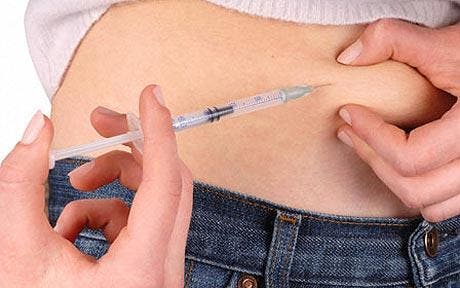In the lab, a team UC Santa Barbara demonstrated that an artificial pancreas that can automatically deliver insulin shots at a regular basis to diabetes patients. The biocompatible pancreas constantly monitors glucose levels and administers the insulin when its needed. This way there would be no need for cumbersome daily insulin injections. The researchers will soon start trials on animal models and if all goes well, clinical trials will follow shortly.
The more severe form of diabetes is type 1, or insulin-dependent diabetes. The disease typically onsets in childhood or adolescence, but can appear later on in life. With Type 1 diabetes, the body’s immune cells attack the pancreas since they mistakenly see the insulin-producing cells in the pancreas as foreign. This is why it’s called an “autoimmune” disease. Scientists are yet unsure why this happens.
The hormone insulin is often referred to as a “key”, since it instructs cells to “open” and allow glucose in. Without insulin, the cells stay locked and the sugar builds up in the blood. This can cause a slew of health problems. First, the cells are starved of glucose. Secondly, the extra sugar in the blood can damage eyes, kidneys, nerves, and the heart, and can also lead to coma and death. This is why diabetics shouldn’t consume sugary foods or drinks. They already have in their system as it is.
Despite active research, type 1 diabetes has no cure. However, diabetics can lead a healthy life with proper treatment. Two years ago, a group at Universitat Autònoma de Barcelona (UAB) cured type 1 diabetes in dogs by injecting them with gene therapy vectors. Those amazing findings at the time shinned a new glimmer of hope that decade-long efforts aimed at curing diabetes in humans weren’t for nothing. The breakthrough we’ve all been waiting for might not be that far away. Until then, though, we need to focus on making treatments better.
Francis J Doyle of UC Santa Barbara and colleagues found a way to design an artificial pancreas that makes hands-on treatment a thing of the past. As a diabetic, making sure you always get your insulin shots on time can be a nightmare. This can be even worse for parents who need to look after their diabetic toddlers or young children.
“I think one of the most important things we can do is alleviate parents’ fears of overnight hypoglycemia,” said Eyal Dassau, a research engineer in UCSB’s Department of Chemical Engineering and the principal investigator on this study. “As a result, parents can get a full night’s sleep without having to worry what might happen at 4 a.m., or who’s awake to check their child’s glucose. That would be a big success.”
The device constantly monitors glucose levels and delivers the insulin in the nick of the time, based on an algorithm developed by the researchers. The algorithm simulates the rise and fall of glucose that would correspond to meals and an overnight period of sleep, but it also constantly re-tweaks itself based on current levels. The artificial pancreas maintained blood glucose within the target range nearly 80 percent of the time, as reported in the journal Industrial and Engineering Chemical Research. Soon, the device will be tested on animals.










